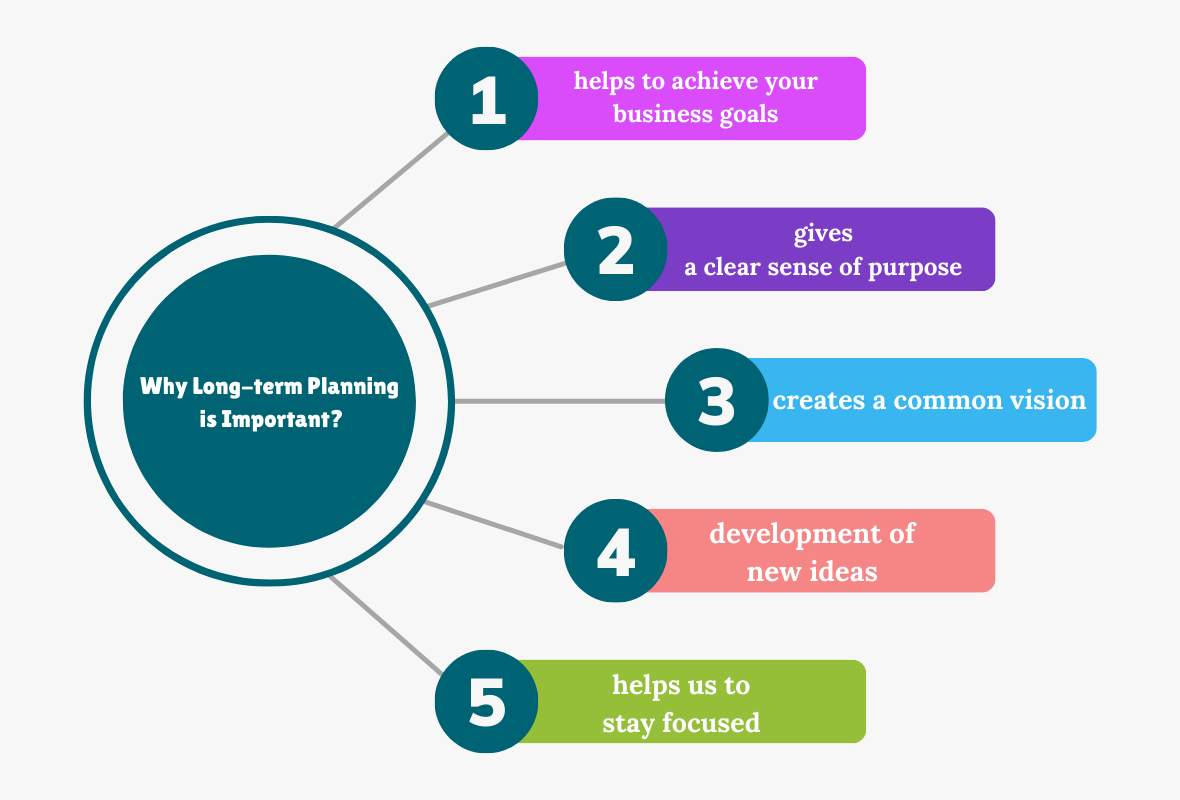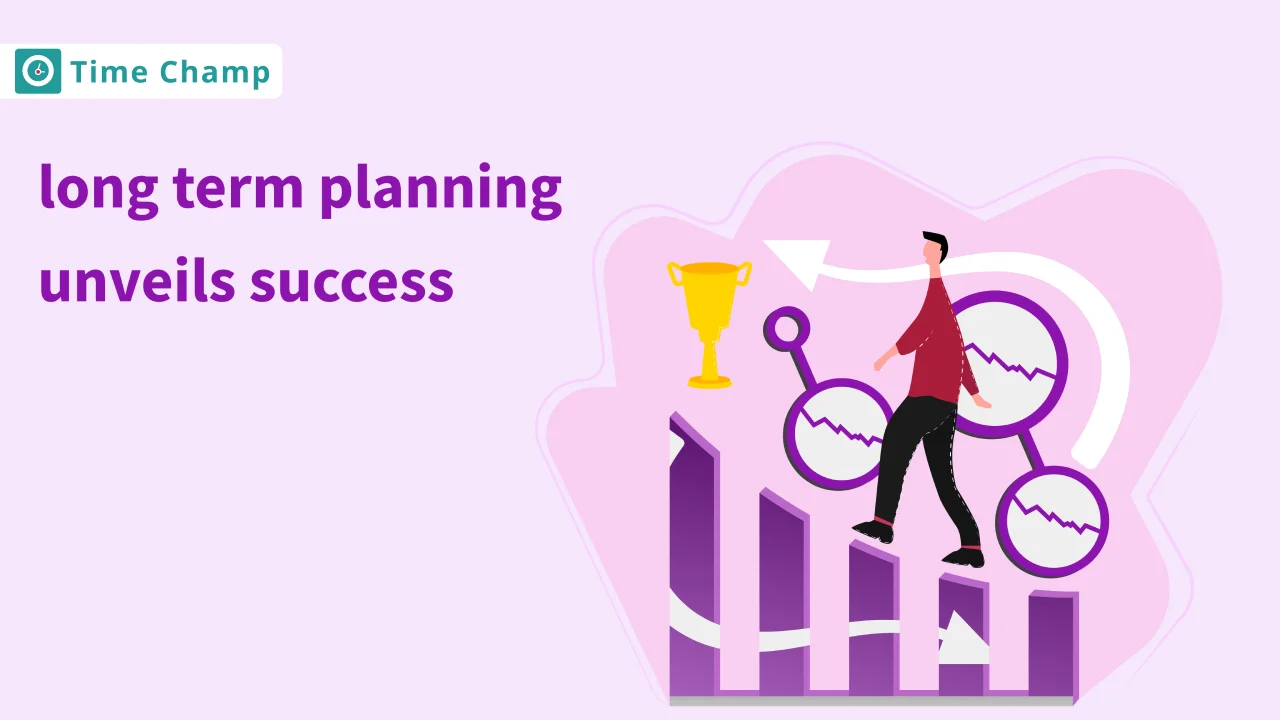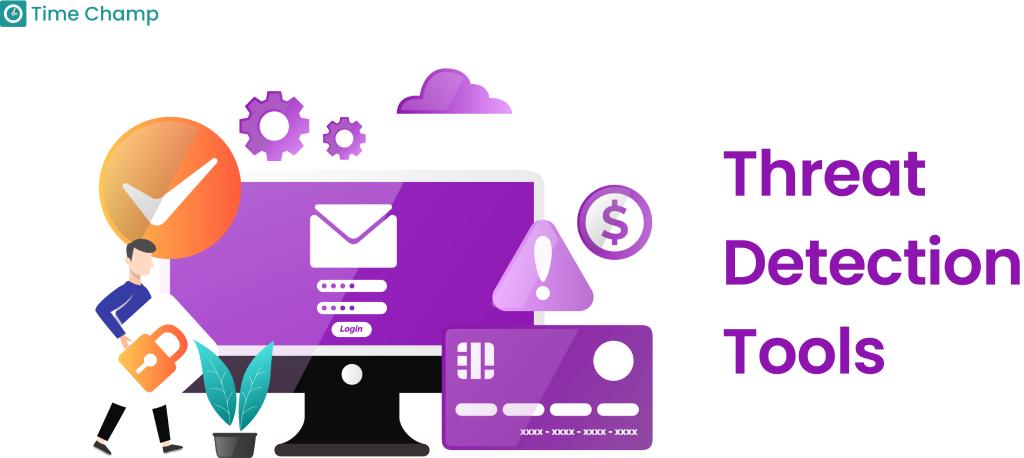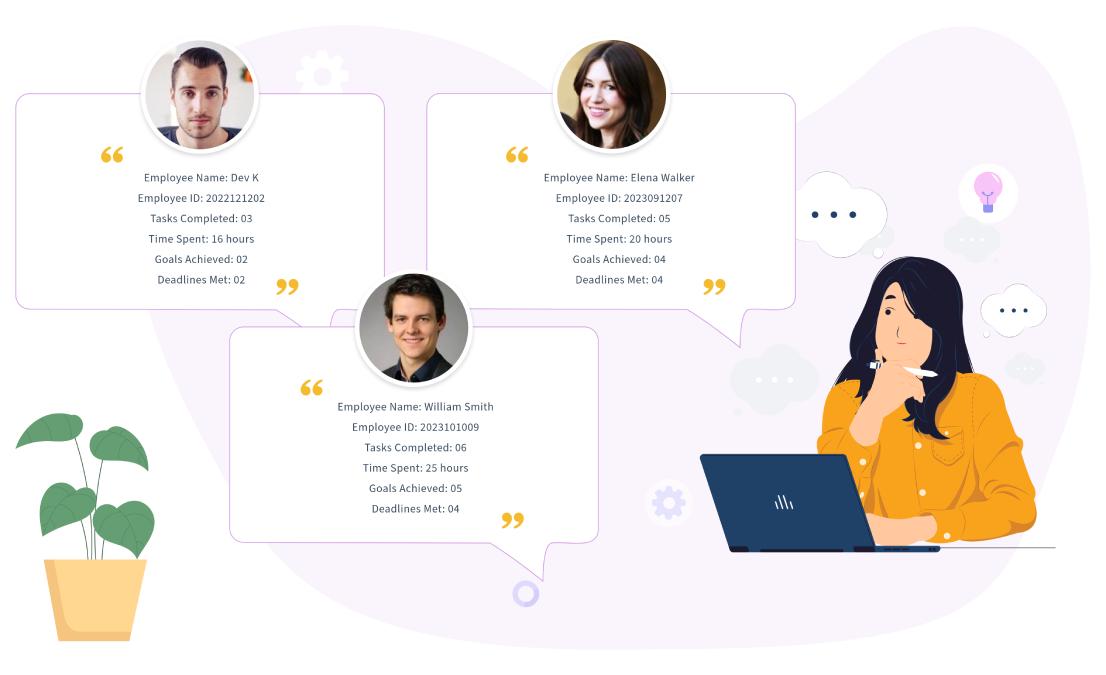What is Long-term Planning?
Long-term planning is about setting up goals that span 2 to 10 years for achievement. These objectives must align with the company’s vision and should indicate the timeframe for their achievement. The principle of successful long-term planning is to predict trends, see the market shifts, and use the most advanced technologies.
Data gathering and analysis is a way for companies to come up with strategies that will be used for sustainable growth and prosperity. This progressive approach enables businesses to tackle future challenges.
Why Long-term Planning is Important?

Long-term planning is a powerful tool
that helps you to achieve business
goals, which gives you a clear sense
of purpose and direction throughout
your business. In business, it
creates a common vision and leads
people towards the achievement of
the same objectives. Long-term
planning creates the possibility for
the development of new ideas and
forward thinking, which allows
businesses to concentrate on
long-term achievements rather than
short-term
ones. The coordinated plans have
everyone on the same page and
working towards deadlines. When
anything is difficult, companies
with clear goals and strong plans
have the flexibility and the will to
persevere for long-term
success.
How to Set Up a Long-Term Planning Approach?

Clarify your vision and goals: The starting point is to develop your long-term vision and clearly define the goals you want to achieve. Make sure that the objectives are realistic, measurable, and in line with your core values.
Perform a SWOT analysis: Give yourself a couple of minutes to identify your strengths, weaknesses, opportunities, and threats, which are commonly called the SWOT analysis. From this analysis, you will get data about how you are doing now and what you will have to deal with in the future. It provides you with the needed information on what you must change and what you can improve.
Setting Achievable Milestones for Long-Term Goals: Attempt to divide your long-term goals into smaller ones, more manageable or achievable stages or milestones. Make sure that you rank the steps by their degree of importance and how soon they must be put into practice. Try to figure out how long each of them is going to last.
Distributing Resources: Make sure to use resources efficiently, not too little and not too much, but just right to get the most out of them. For example, time, money, people, and tools are some of the things that you must invest to reach your long-term goals. Furthermore, make sure that you apply these resources in a manner that will lead to effectiveness.
Creating Plans and Tactics: Explain in detail the step-by-step plan of how you will accomplish each milestone. This will help you reach your long-term goals by deciding the specific plans and tactics. It involves looking into the factors like the current market situation, the competition, and the customer’s needs.
Promote Communication and Engagement: Support open communication and provides scope for feedback from the team or the organization. This not only solves current problems but also allows us to find the problems at the early stage and find the most suitable solutions.
Review and Learn: Constantly monitor the progress of your long-term plans to learn from the successes and failures. Use the information to better your plans.
What are the Mechanisms of Implementation and Follow-Ups in Long-Term Planning?
Streamline Tasks with a Detailed To-Do List: Develop a plan of action and use a to-do list with small tasks that are easier to achieve. It makes things manageable and operations to be done with more convenience.
Responsibility: Assign tasks to the team members and keep everyone involved. Keep on talking and keep track of the progress using the milestones.
Flexibility: It’s important to remember that you should be able to adjust the plan and be ready to make changes. If the condition is not working, be able to change it. From time to time, check the progress and make changes when needed to stay on schedule.
Measuring success with KPIs: Establish (Key Performance Indicators) KPIs that are consistent with your goals. Inform individuals or stakeholders about your achievements.
Data Analysis: Data analysis includes data collection and comparing it with the data you have. This means that we can trace the plan and use the data for its improvement.
Schedule Deadlines: Deadlines for each task or milestone should be a key part of the plan. It not only makes the process flow but also contributes to the sense of urgency, which in turn, generates the feeling of concentration and working productively among the team.
Review regular meetings: The plan is reviewed at the meetings that are held on a regular basis. At these meetings, performance is evaluated, and problems are pinpointed. If there are problems, they are discussed, and the plan is revised accordingly. This makes sure that the plan works well, and any problems are fixed immediately.
What are the Best Practices for Effective Long-term Planning?
- Interact with the people who will be directly involved in the project. They can be a source of good ideas, if they understand what you are planning, they will likely support you.
- Make sure that your team members have the skills for the present and the future. The investment in the strength of your team is the key to the success of your plans in the future.
- When you are drawing up your plans, remember that they also affect the environment around you. Consider the environment, human treatment, and obeying the rules.
- Imagine the various things that could happen in the future. Decide what you would do if these things happened in real life. The ability to be prepared for anything helps you remain focused.
- Be definite about what you want to be in the long run. A big and ambitious goal can unite everybody to work as a team to achieve it.
- Listen to what your customers are asking for and what they need. If you keep them happy, they will stay and back up your ideas.
- Make sure that the plans you make are in line with all the laws and rules that apply to your business. Being by the rules saves you from trouble and helps you to be trusted.
- Let your team lead on implementing your long-term goals. Make sure they understand that they are responsible for the outcomes. In this way, everyone feels they are contributing to the community.
Discover the magic of long-term planning! Start achieving your goals effortlessly.
Level up your planning game with Time Champ! Let's get started!
Signup for FreeBook DemoWrap Up
Planning for the future is very crucial for the achievement of success in the future. Through the setting of goals, checking out the trends, and the use of resources in a smart way, businesses can keep on the right track to grow.Tools like project management software can play a key role in ensuring that each person has the same view, can plan effectively, and work as a team more efficiently To achieve it properly, you have to be sure of your objectives, divide the tasks into the ones that can be easily done, and communicate with your team. Be flexible, monitor the progress, and be ready to modify your plans. Through good planning and a little bit of adjustment, businesses can achieve their long-term goals and cope with whatever issues may arise.
Long-term planning is about figuring out what you want to achieve in the future and making decisions now to help you get there. It is like drawing a map that takes you to your destination.
It is important to do long-term planning because it helps you to set your goals and it makes the decisions today to shape your future. It helps you to set a direction and makes your actions meaningful because it moves you towards your objectives.
Long-term planning usually lasts 5-10 years depending on the individual or the business.
Long-term planning involves predicting future trends, market changes, and technological advancements.
To begin with, you must define your vision and goals, analyze your strengths, weaknesses, opportunities, and threats (SWOT), set realistic milestones, allocate resources, create plans and strategies, encourage communication, and sometimes review and study from your development.
These include making a to-do list with priority, allocating duties, being flexible and adaptable, measuring achievements with KPIs, studying data, setting time limits, and holding daily meetings.
The best practices are hiring professionals, crew increase, considering the whole picture, preparing for different scenarios, having a clear vision, focusing on customers, following policies and guidelines, and empowering and maintaining people’s responsibility.
The involvement of the key individuals maintains that everyone who might be directly engaged in the project understands the plan and probably helps it, thus, bringing more valuable insights and ideas.
You can prepare for unknown by creating different scenarios and thinking about how you would respond to them earlier. This will help you maintain a balanced and flexible business life.
The customer needs to be the priority in the long-term planning. It is the key to the sustainable development and the competition. It creates customer loyalty and enhances your brand’s image, giving you a competitive edge over others. Using customer feedback, you can come up with new ideas, improve your products and increase your revenue.








